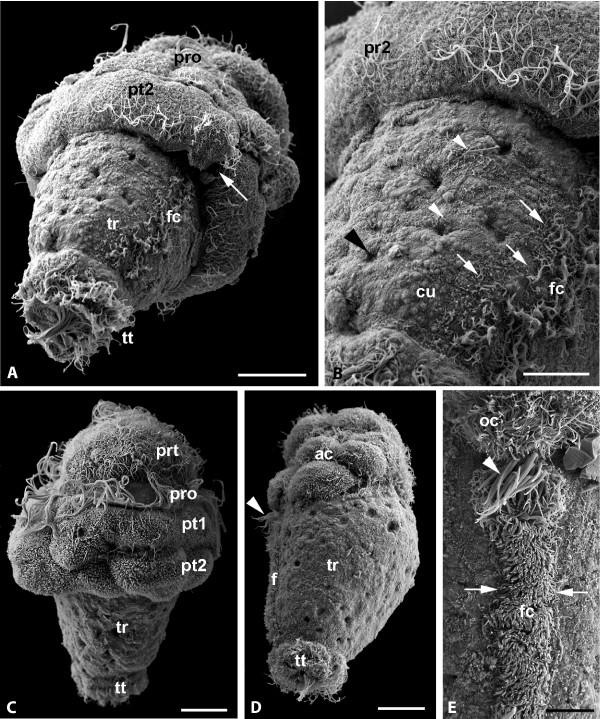Figure 4.
Wirenia argentea larvae (A-C) and postlarvae (D-E), SEM micrographs. A. Day 5 larva, ventrolateral view. The trunk (tr) is largely exposed and bears foot cilia (fc) and a prominent telotroch (tt), the second tier of posttrochal cells (prt2) shows a ventral cleft (arrow); the prototroch cilia (pro) are inconspicuous due to a preparation artifact; scale bar 20 μm. B. Detail of figure A; the surface of the trunk is covered by cuticle (cu) and single scattered cilia (white arrowheads); note that there is no clear mantle margin (arrows) but that foot cilia (fc) are arranged irregularly; the small depressions (black arrowhead) may represent gland openings; scale bar 10 μm. C. Day 7 larva with exposed trunk (tr) bearing telotroch (tt) and large apical cap; note that the posttrochal cells (pt1, pt2) are irregular in shape and lack cilia, while the prototroch (pro) and pretrochal area (prt) are intact; scale bar 20 μm. D. Day 10 postlarva, early crawling stage in a lateral view; the foot (f) and prepedal ciliary pit (arrowhead) are fully developed, part of the apical cap (ac) and the telotroch are still present; scale bar 20 μm. E. Detail of anterior part of the foot with prepedal ciliary pit (arrowhead) and oral ciliation (oc); note the sharp border between mantle cuticle and foot ciliation (arrows); scale bar 10 μm.

